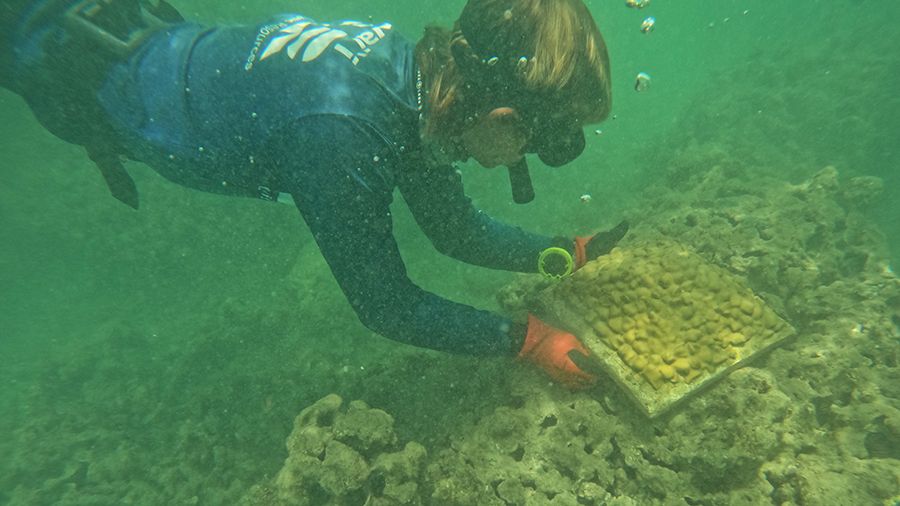HONOLULU — Corals grown at the Department of Land and Natural Resources Division of Aquatic Resources’ Coral Restoration Nursery were recently placed on the south side of Hanauma Bay to restore colonies damaged by a large log in 2020, according to a news release.
DAR’s Sand Island nursery raises corals to restore colonies damaged by natural or manmade events.
A team of six from DAR placed six pyramid-shaped, 17-inch coral colonies onto a rock substructure a few feet below the ocean surface.
Prior to selecting a location, DAR identifies suitable sites, cleans them, then uses a special adhesive to attach the colonies to the substructure. Once the corals arrive, they’re taken to the shoreline and floated in trays to the site. DAR will monitor the coral colonies to see how they’re doing.
“This is the first large-scale restoration project in the bay. We’re planting an endemic coral called brown lobe coral. These are corals that grow faster and larger than they would in the ocean, so this helps with damage recovery,” said Christina Jayne, DAR’s coral nursery curator in the release.
During the pandemic, the DAR team conducted a pilot project to see how nursery-raised colonies would do in Hanauma Bay. According to Jayne, the results were very positive. Those colonies are still in the bay and doing well.
“Friends of Hanauma Bay has been very fortunate and honored to have a role to play in this first coral restoration project at the bay,” said Lisa Bishop, president of the Friends of Hanauma Bay.
According to Bishop, the conditions at Hanauma Bay prior to the pandemic, compared to conditions during its closure, was “life-changing.”
“The COVID closure taught all of us that there are some adverse impacts of over-tourism in places like Hanauma Bay,” she said. “We’re so grateful for this administration, the city and county, who joined with us in saying, ‘Now that we’re going to reopen Hanauma Bay maybe we should do it smarter, better, and with a view toward better conservation of the resources.’
So closing the bay for two days a week, limiting the number of hours per day and actually putting a cap on the number of visitors… these are the keys to helping Hanauma Bay retain the improvement in the conservation that happened as a result of COVID,” said Bishop.
Based on how well the colonies do, the volunteer-based nonprofit Friends of Hanauma Bay is talking with DAR about additional projects.
“We have to be very careful about what comes into a Marine Life Conservation District (MLCD) and depending on how these coral colonies do and if they thrive and reproduce well in the wild, I think we can open the door to other kinds of projects like this. Not just in Hanauma Bay, but all over the state,” said Bishop.
Sarah Yamanaka covers events, environmental and community news for Spectrum News Hawaii. She can be reached at sarah.yamanaka@charter.com.



